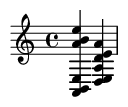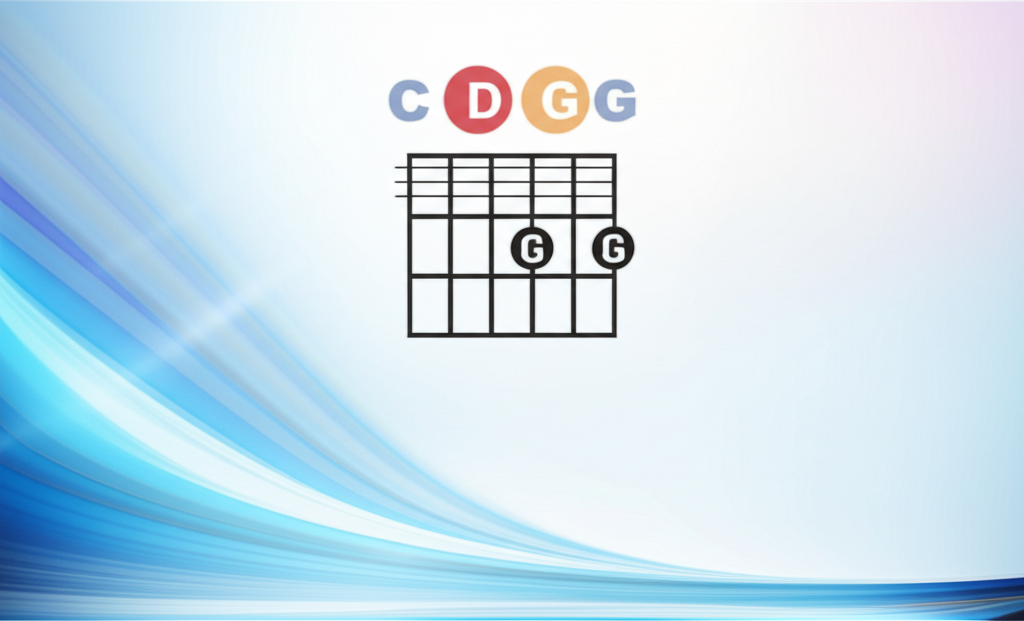Sus2 Chord: A Guide to the Open and Airy Suspended Harmony
Summary:
The sus2 chord (suspended second) is a triad that replaces the defining third with a major second. This simple substitution removes the major or minor quality, creating a uniquely open, ambiguous, and modern sound. It is used to create smooth transitions, add emotional color, and build atmospheric textures in genres from folk and rock to pop and film music.
Keywords:
Sus2 chord, suspended second, music theory, chord construction, voice leading, add9 chord, guitar chords, piano chords, contemporary harmony, songwriting.
Introduction: What Is a Suspended Chord?
In music, a "suspended" chord creates gentle tension by delaying the arrival of an expected note. Traditionally, this meant the third of the chord. While the sus4 chord is more common in classical theory, its modern cousin, the sus2 chord, has become a staple of contemporary music. It achieves its signature sound by replacing the third with the major second scale degree.
This creates a harmony that is neither major nor minor, giving it a spacious, floating, and emotionally ambiguous quality. It feels both stable and unresolved at the same time, making it a powerful tool for songwriters and composers looking to add a touch of sophistication and atmosphere to their music.
The Structure of a Sus2 Chord
A sus2 chord is built using a simple formula based on the major scale of the root note:
- Root (1): The foundation of the chord.
- Major Second (2): The note that "suspends" the third. It is two semitones (a whole step) above the root.
- Perfect Fifth (5): The note that provides stability and anchors the harmony. It is seven semitones above the root.
For example, to build a C sus2 chord, we take the 1st, 2nd, and 5th notes from the C major scale (C, D, E, F, G, A, B). This gives us the notes: C, D, and G.
Example: C sus2 Chord

Sus2 vs. Add9: A Common Point of Confusion
Sus2 chords are often confused with add9 chords because they both contain the second (or ninth) degree. However, there is a crucial difference:
- Sus2: Replaces the third. Formula: 1 - 2 - 5 (e.g., C-D-G).
- Add9: Adds the ninth to a standard major or minor triad. Formula: 1 - 3 - 5 - 9 (e.g., C-E-G-D).
The presence of the third in an add9 chord gives it a clear major or minor quality, while the sus2 remains ambiguous. Despite this, they can sound similar and are sometimes used interchangeably, especially in pop and rock music where the third might be omitted from an add9 voicing for simplicity.
Comparison: Csus2 vs. C(add9)

How to Use Sus2 Chords in Your Music
The beauty of the sus2 chord lies in its versatility. It can be used as a point of tension that resolves, or as a stable "color" chord that needs no resolution.
1. Classic Resolution
In its traditional role, the suspended second (the "2") resolves to the third of the chord it is suspending. The most common resolution is for the second to move down by a semitone to the major third, or up by a semitone to the minor third (though this is less common).
Example: Gsus2 resolving to G major

2. As a Stable Color Chord
In modern pop, rock, and folk, sus2 chords are often used as standalone harmonies that don't resolve. A progression might move between several sus2 chords, creating a constant feeling of openness and space. This technique is especially common on the guitar, where voicings for chords like Asus2, Dsus2, and Esus2 are easy to play and sound fantastic.
Example: A Modern Rock/Folk Progression

Sus2 Chords in Practice
On the Guitar
The guitar is a natural home for the sus2 chord due to its open strings. Many common open-position chords can be easily modified to become sus2 chords, often by simply lifting a finger. This creates effortless and beautiful-sounding embellishments.
- Asus2 (x02200) : Remove your first finger from a standard A minor chord.
- Dsus2 (xx0230): Lift your middle finger from a D major chord.
- Esus2 (024400): A less common but powerful-sounding shape.
On the Piano
On the piano, the sus2 chord's character can be changed dramatically through different voicings. Playing the notes close together (e.g., C4-D4-G4) creates a tight, gentle dissonance. Spreading the notes out (e.g., C3 in the left hand, D4 and G4 in the right) enhances the chord's airy, spacious quality, which is perfect for ballads and filmic textures.
Famous Musical Examples
Once you know what to listen for, you'll hear sus2 chords everywhere:
- "Message in a Bottle" by The Police: The iconic opening guitar riff is built around arpeggiated sus2 and add9 shapes.
- "Wonderful Tonight" by Eric Clapton: The main riff famously moves between major chords and their suspended (both sus4 and sus2) variations.
- "Patience" by Guns N' Roses: The acoustic guitars are drenched in the sound of open Gsus2, Csus2, and Dsus2 chords.
- "Fire and Rain" by James Taylor: A masterclass in using suspended chords to create gentle movement and emotional depth in folk music.
Common Mistakes and How to Avoid Them
- Overuse: While beautiful, a progression of only sus2 chords can sound directionless. Mix them with major and minor chords to create contrast and forward momentum.
- Ignoring Context: The ambiguous nature of a sus2 chord may not fit well in styles that require strong, clear harmonic function, like traditional blues or certain types of jazz.
- Clumsy Voicing: On piano, playing the root and second very close together in a low register (e.g., C2-D2) can sound muddy. Give the notes space to breathe.
Practice Exercises
- Ear Training: Play a major chord (C-E-G) and then its sus2 version (C-D-G). Sing the third ("E") and then the second ("D") to internalize the difference in sound and feeling.
- Chord Progressions: Take a simple progression like G - C - D - G. First, play it as written. Then, replace each chord with its sus2 version (Gsus2 - Csus2 - Dsus2 - Gsus2). Notice how the emotional character changes.
- Compositional Task: Write a short melody over a single, sustained Dsus2 chord. Because the harmony is open, your melody has more freedom to suggest different moods.
Conclusion
The sus2 chord is far more than a simple theoretical concept; it's an essential tool for modern expression. Its ability to create space, add a touch of modern sophistication, and provide smooth voice leading makes it invaluable for any musician, songwriter, or producer.
By understanding its structure and learning to use it effectively—whether as a fleeting moment of tension or as a stable harmonic color—you can add significant emotional depth and nuance to your music. Start experimenting with sus2 chords today and unlock a new world of open, airy harmonies.
